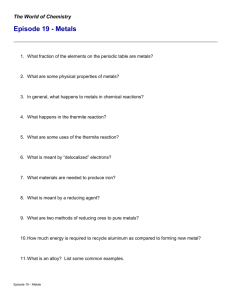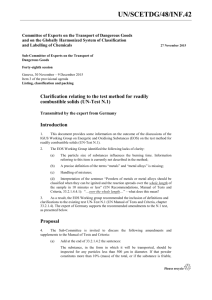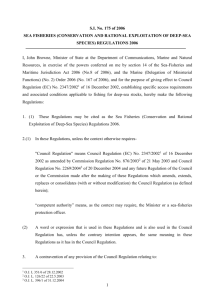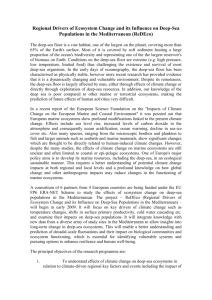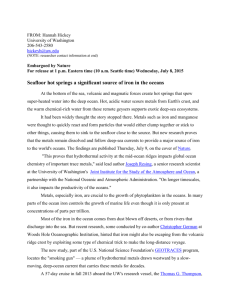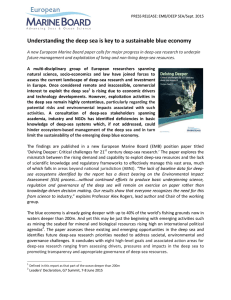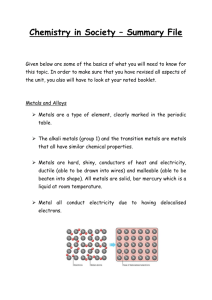Impact_summary
advertisement
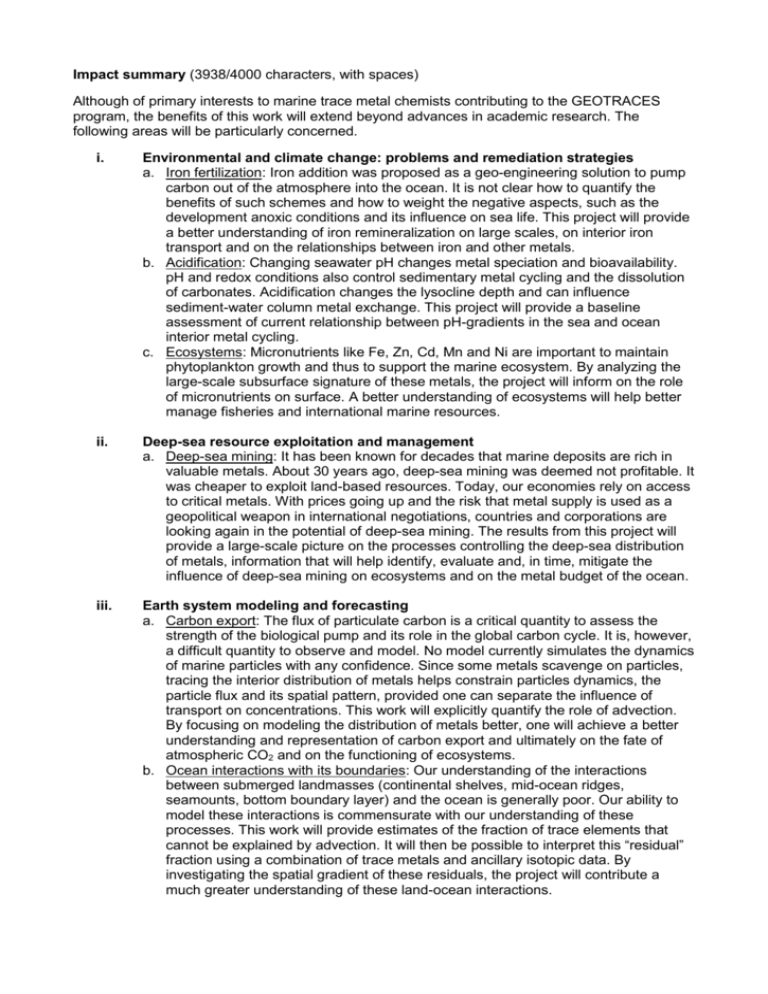
Impact summary (3938/4000 characters, with spaces) Although of primary interests to marine trace metal chemists contributing to the GEOTRACES program, the benefits of this work will extend beyond advances in academic research. The following areas will be particularly concerned. i. Environmental and climate change: problems and remediation strategies a. Iron fertilization: Iron addition was proposed as a geo-engineering solution to pump carbon out of the atmosphere into the ocean. It is not clear how to quantify the benefits of such schemes and how to weight the negative aspects, such as the development anoxic conditions and its influence on sea life. This project will provide a better understanding of iron remineralization on large scales, on interior iron transport and on the relationships between iron and other metals. b. Acidification: Changing seawater pH changes metal speciation and bioavailability. pH and redox conditions also control sedimentary metal cycling and the dissolution of carbonates. Acidification changes the lysocline depth and can influence sediment-water column metal exchange. This project will provide a baseline assessment of current relationship between pH-gradients in the sea and ocean interior metal cycling. c. Ecosystems: Micronutrients like Fe, Zn, Cd, Mn and Ni are important to maintain phytoplankton growth and thus to support the marine ecosystem. By analyzing the large-scale subsurface signature of these metals, the project will inform on the role of micronutrients on surface. A better understanding of ecosystems will help better manage fisheries and international marine resources. ii. Deep-sea resource exploitation and management a. Deep-sea mining: It has been known for decades that marine deposits are rich in valuable metals. About 30 years ago, deep-sea mining was deemed not profitable. It was cheaper to exploit land-based resources. Today, our economies rely on access to critical metals. With prices going up and the risk that metal supply is used as a geopolitical weapon in international negotiations, countries and corporations are looking again in the potential of deep-sea mining. The results from this project will provide a large-scale picture on the processes controlling the deep-sea distribution of metals, information that will help identify, evaluate and, in time, mitigate the influence of deep-sea mining on ecosystems and on the metal budget of the ocean. iii. Earth system modeling and forecasting a. Carbon export: The flux of particulate carbon is a critical quantity to assess the strength of the biological pump and its role in the global carbon cycle. It is, however, a difficult quantity to observe and model. No model currently simulates the dynamics of marine particles with any confidence. Since some metals scavenge on particles, tracing the interior distribution of metals helps constrain particles dynamics, the particle flux and its spatial pattern, provided one can separate the influence of transport on concentrations. This work will explicitly quantify the role of advection. By focusing on modeling the distribution of metals better, one will achieve a better understanding and representation of carbon export and ultimately on the fate of atmospheric CO2 and on the functioning of ecosystems. b. Ocean interactions with its boundaries: Our understanding of the interactions between submerged landmasses (continental shelves, mid-ocean ridges, seamounts, bottom boundary layer) and the ocean is generally poor. Our ability to model these interactions is commensurate with our understanding of these processes. This work will provide estimates of the fraction of trace elements that cannot be explained by advection. It will then be possible to interpret this “residual” fraction using a combination of trace metals and ancillary isotopic data. By investigating the spatial gradient of these residuals, the project will contribute a much greater understanding of these land-ocean interactions.



